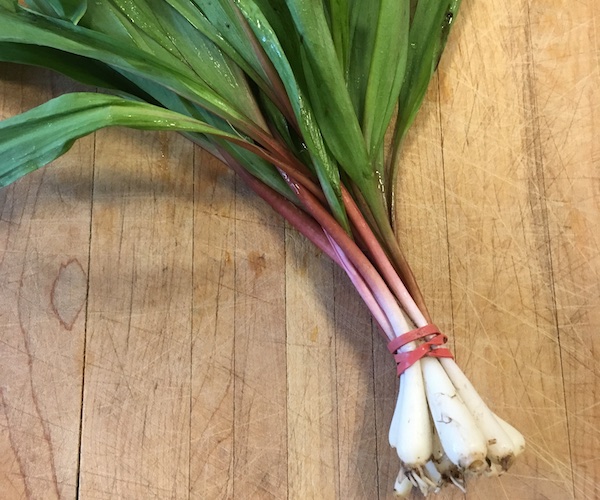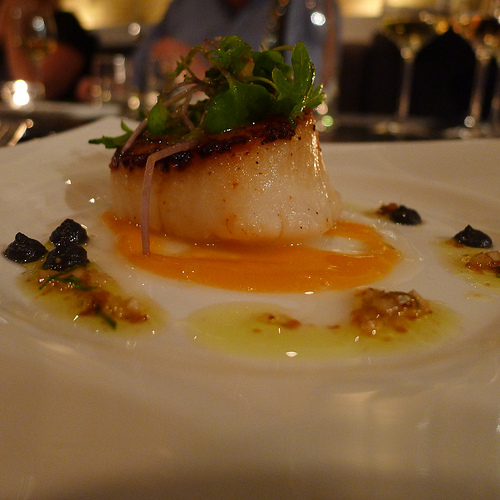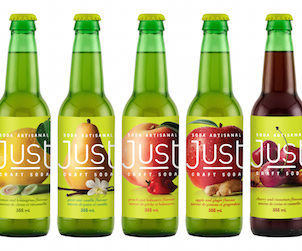Malcolm Jolley welcomes a long overdue ramp season.
When the history of the good food revolution in the first two decades of the 21st century is written, I hope ramps get their own chapter. They used to be a big deal. Too big a deal because the appetite for them in the Eastern Seaboard of the United States and Quebec, nearly wiped them out. Ramps are a perennial, and when you take them out of the ground with their roots, they don’t grow back. Conscientious ramp foragers should leave two plants for every one put in the sack, but I guess the ramprush got the better of many so Quebec instituted a ban on the harvest. Luckily, rampocalypse did not happen in Ontario, despite the ubiquitousness of pickled ramps on the charcuterie broads of the province, so we can enjoy them with an untroubled conscience.
This year’s ramp season, like the spring it’s supposed to harbinge, has come slowly. The first Ontario ones were spotted in my local gourmet store just this week, when looking back at the GFR archives from years ago, they would often appear in early April, not long after the snow had melted. The beauty of ramps is twofold. First the bulbs come with the greens so it’s a perfect garlicky self-contained flavour giver. Second, like its domestic cousin, garlic, it loves to be sautéed in butter or olive oil. In my house we took the first ramps, chopped them up and sautéed them in olive oil and mixed them up into fregola for a perfect side dish. Another favourite way to enjoy them is stuffed into chicken breasts. Here is my recipe, first posted in the warmer spring of 2011…
Ramp Stuffed Chicken Breasts
Portion one on the bone, skin-on chicken breast per person
Preheat oven to 500 degrees Fahrenheit / 260 Celsius
Chop as many ramps as you can get your hands on into as small portions as you can: 1-2 centimeters for the stems and julienne the leaves
In a bowl, mix the chopped ramps with a goodly amount of olive oil, salt and pepper, and minced chili peppers, if you like a bit of heat – skip the chili if you don’t.
Add a squeeze of half a lemon, or a table spoon of cider vinegar, if you’re a committed locavore – it’s about adding a touch of acid
Mix it all up with your hands, and then start massaging it, with your hands, in and around the breasts
Jamie Oliver-style, carefully lift up the skin of the breast and stuff as much of the ramp sauce between the skin and meat as you can. Bonus flavour points are awarded if you find and stuff the little fold at the underside of the breast, as though it was a ‘Chicken Kiev’. The point is to get as much rampiness into and around the bird bits as you can manage
If you’re an “A type” and are organized enough to prep the breasts a few hours before cooking, then more flavour points for you: let them sit in the fridge. If, like me, you’re not: don’t worry, be happy – they will be delicious anyway.
Place breasts in a roasting dish and place on the top shelf of your very hot oven. Cook the begeezus out of them for 5-10 minutes, keeping an eye out that the skin is getting golden or not burning. Advance chicken roasters may opt for broiling a this point. The idea is a quick sizzle to get everything going and ensure crispy skin.
Then turn the oven down to 375 F / 180 C and let cook for another 10, 15 or 20 minutes depending on the size of the breasts – consult a book or Google, if you’re unsure. Or keep an eye out – they are generally done when they look and smell done. You can always do a “juices running clear” test if you’re worried, bearing in mind you can always cook them a bit more if they’re underdone, but you can’t “uncook” them.
Let them rest for a few minutes before devouring with a light, tart red wine like a Niagara Gamay.








